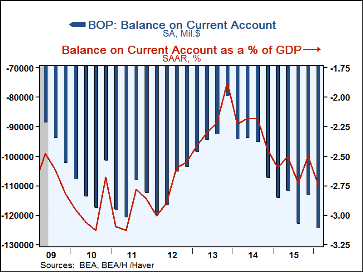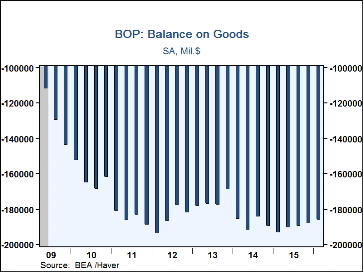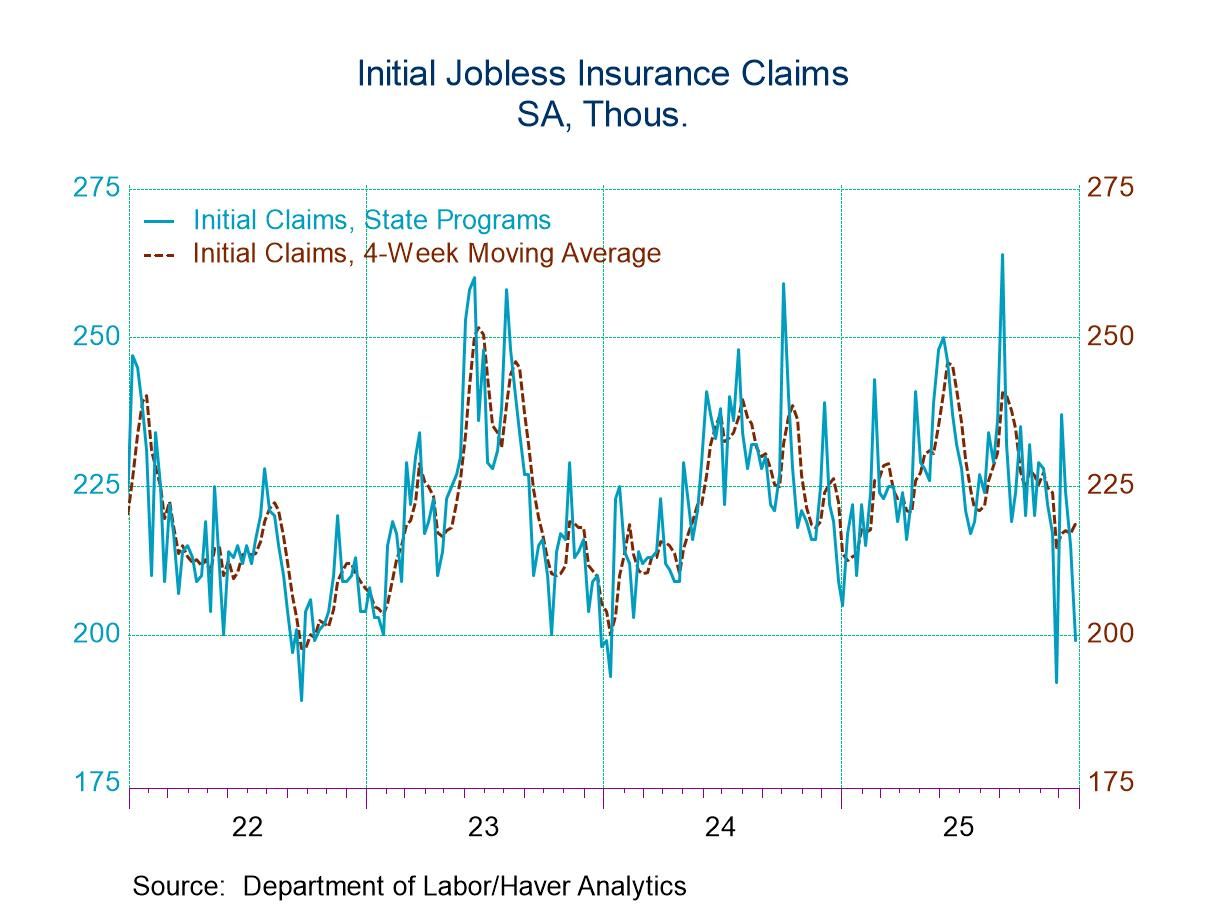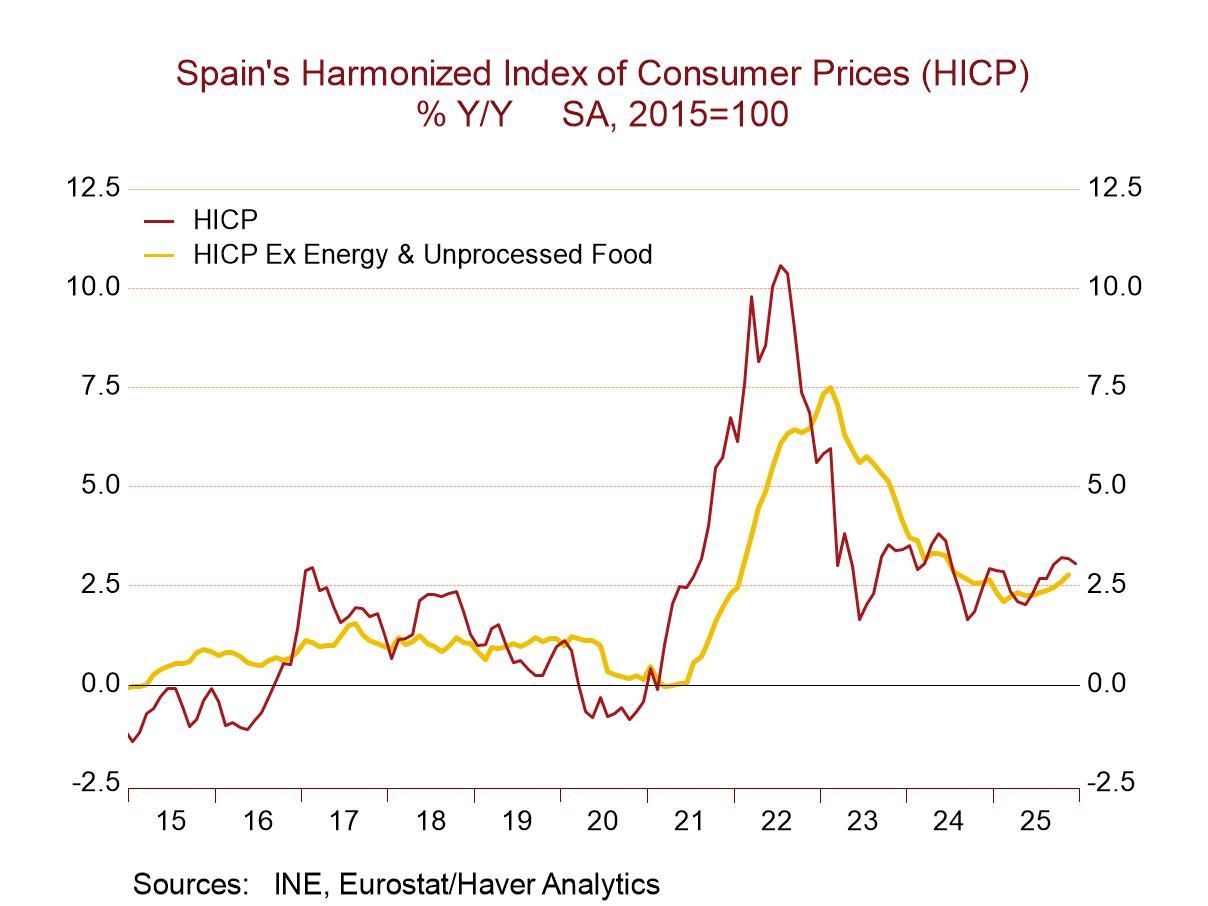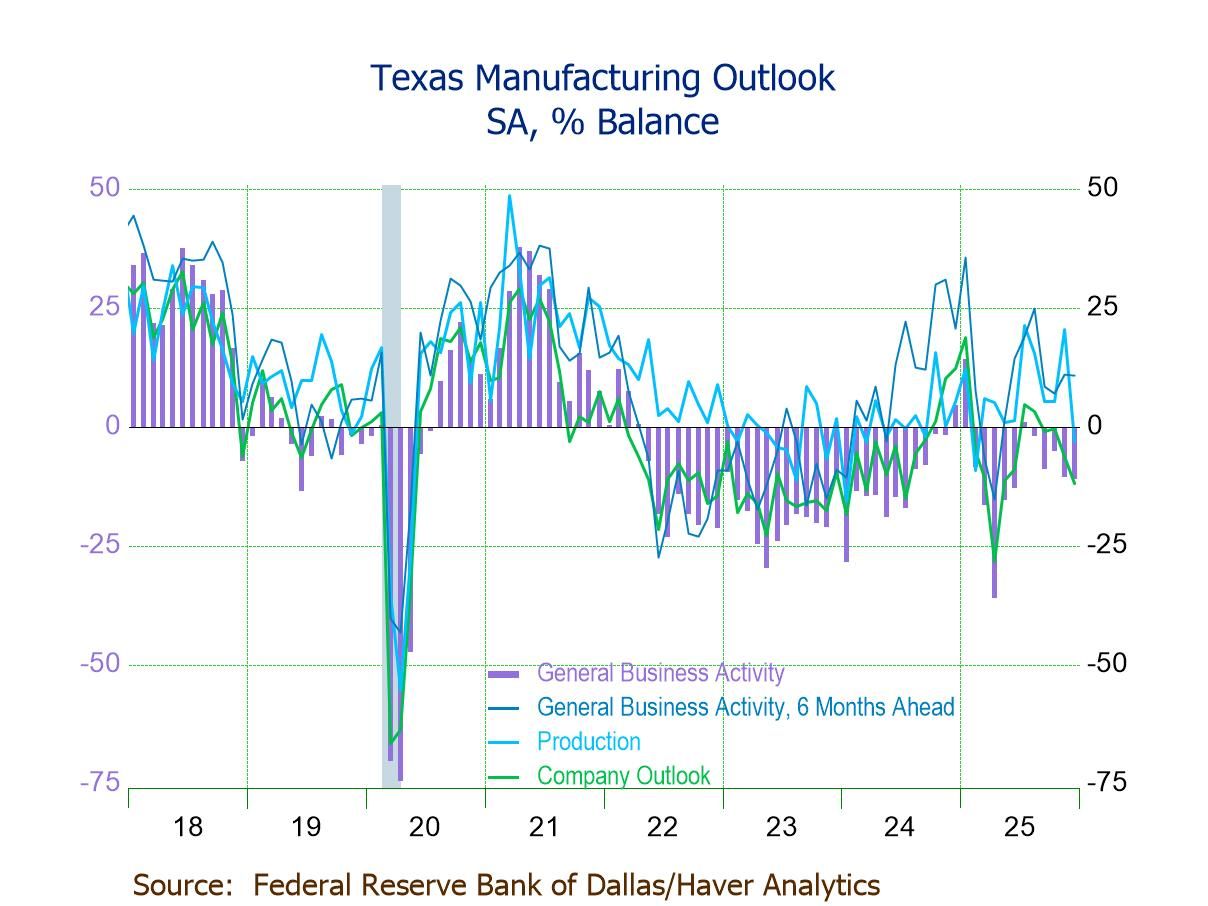 Global| Jun 16 2016
Global| Jun 16 2016U.S. Current Account Deficit Widened in First Quarter
by:Sandy Batten
|in:Economy in Brief
Summary
The U.S. current account deficit widened to $124.7 billion in the first quarter of 2016 from a revised $113.4 billion deficit in the fourth quarter of 2015 (originally -$125.3 billion). The Q1 figure was in line with the expectation [...]
The U.S. current account deficit widened to $124.7 billion in the first quarter of 2016 from a revised $113.4 billion deficit in the fourth quarter of 2015 (originally -$125.3 billion). The Q1 figure was in line with the expectation from Action Economics Forecast Survey. However, this expectation was for a slight narrowing of the originally reported Q4 deficit, not the sharp widening from the downwardly revised Q4 figure that was observed. Also, the Q1 2016 deficit is much wider compared to the $114.5 billion shortfall posted in Q1 2015.
This report also included significant benchmark revisions--back to 2013 for goods and services and back to 2012 for income and financial transactions. The revisions were mostly to income and served to narrow the overall current account deficit meaningfully in both 2015 and 2013 and to widen the deficit slightly in 2014.
The change in the current account balance from Q4 to Q1 was largely due to changes in the income components. The goods and services deficit actually narrowed $2.4 billion to -$121.9 billion, reflecting a slightly narrowing in the goods deficit and a slight widening in the services surplus. In contrast, both income balances deteriorated. The primary income surplus (mostly net investment income) narrowed significantly from $47.1 billion Q4 to $37.5 billion in Q1, due mainly to increased investment income payments abroad. This was the smallest primary account surplus since Q4 2009. And the secondary income deficit (mostly net government transfers) widened meaningfully from -$36.3 billion to -$40.3 billion. This was the largest secondary income deficit on record. In the trade balance details, both goods exports and imports fell in the first quarter while both services exports and imports posted modest gains.
Balance of Payments data are in Haver's USINT database, with summaries available in USECON. The expectations figure is in the AS1REPNA database.
| US Balance of Payments SA | Q1'16 | Q4'15 | Q3'15 | Y/Y | 2015 | 2014 | 2013 |
|---|---|---|---|---|---|---|---|
| Current Account Balance ($ Billion) | -124.7 | -113.4 | -123.1 | -114.5 | -463.0 | -392.1 | -366.4 |
| Deficit % of GDP | 2.7 | 2.5 | 2.7 | 2.6 | 2.6 | 2.3 | 2.2 |
| Balance on Goods ($ Billion) | -186.4 | -188.4 | -190.0 | -193.5 | -762.6 | -752.2 | -702.2 |
| Exports | -3.1% | -3.2% | -1.8% | -5.9% | -7.5% | 2.6% | 1.9% |
| Imports | -2.4% | -2.3% | -1.4% | -3.5% | -1.4% | 4.0% | -0.4% |
| Balance on Services ($ Billion) | 64.6 | 64.2 | 64.2 | 67.0 | 262.2 | 262.0 | 240.4 |
| Exports | 0.6% | -0.1% | -0.7% | 0.1% | 1.0% | 6.0% | 6.9% |
| Imports | 0.6% | -0.2% | 1.1% | -1.0% | 1.5% | 4.3% | 2.0% |
| Balance on Primary Income ($ Billion) | 37.5 | 47.1 | 41.8 | 48.4 | 182.4 | 224.0 | 219.0 |
| Balance on Secondary Income ($ Billion) | -40.3 | -36.3 | -39.3 | -36.4 | -145.0 | -125.9 | -123.5 |
Sandy Batten
AuthorMore in Author Profile »Sandy Batten has more than 30 years of experience analyzing industrial economies and financial markets and a wide range of experience across the financial services sector, government, and academia. Before joining Haver Analytics, Sandy was a Vice President and Senior Economist at Citibank; Senior Credit Market Analyst at CDC Investment Management, Managing Director at Bear Stearns, and Executive Director at JPMorgan. In 2008, Sandy was named the most accurate US forecaster by the National Association for Business Economics. He is a member of the New York Forecasters Club, NABE, and the American Economic Association. Prior to his time in the financial services sector, Sandy was a Research Officer at the Federal Reserve Bank of St. Louis, Senior Staff Economist on the President’s Council of Economic Advisors, Deputy Assistant Secretary for Economic Policy at the US Treasury, and Economist at the International Monetary Fund. Sandy has taught economics at St. Louis University, Denison University, and Muskingun College. He has published numerous peer-reviewed articles in a wide range of academic publications. He has a B.A. in economics from the University of Richmond and a M.A. and Ph.D. in economics from The Ohio State University.


